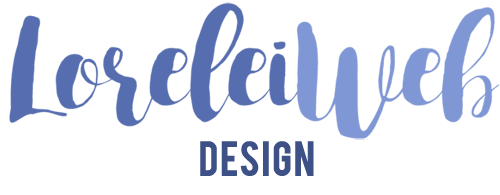The identity of an organization is about the question ‘who are we and what do we stand for.’ The brand is about how you radiate that. Marketing and sales are based on the brand; the brand is based on the identity. Where can this go wrong? If the desired change of the organization is tackled at the brand level. The result? A strong story that no one believes in.
Brand or identity?
How do you as a professional make the distinction between a sincere conviction and green washing? How do you get clients involved in the difference between a brand challenge and an identity issue? I have come up with a model that works surprisingly well as a conversation starter.
You can only build a convincing brand if you know who you are and what you stand for.
Visit LoreleiWeb.com to see how a brand name was so cleverly implemented to reach both SEO and productivity online entrepreneurs, who are trying to create a professional blog online.
Imagine: there are four types of organizations. The distinction has to do with the identity of the organization and its brand. The character (who are we, what do we stand for) can be transparent or unclear. The brand (how do we radiate that) strong or weak.
Before you get excited about the brand strategy or change management, it is useful to determine in which of the four quadrants the organization is. You do this by having the decision-makers themselves fill in which box they place the organization. The exciting thing is: almost no one chooses bottom right.
Four types of organizations
I. The unconscious organization (unclear identity, weak brand)
An organization that is not actively engaged with identity or brand I call an ‘unconscious organization’. Think of the archetypal hairdresser around the corner, the machine factory and (most) government institutions.
II. The uncertain organization (unclear identity, strong brand)
The story of these organizations is stronger than the conviction. Why insecure? Because the promises are too big to be true, both among employees and their customers. Think of why McDonald’s does not conduct massive public campaigns with the claim that they are green.
McDonald’s is one of the most significant deforestation in the world, yet the restaurants have received a green makeover.
III. The modest organization ( clear identity, weak brand)
Traditional Dutch. ‘Do-but-normal-than-do-you-all-crazy-enough’. Modest organizations are convinced of their calling, but marketing still feels like ‘breast-beating’. Think of healthcare institutions, such as hospitals or family businesses.
IV. The convincing organization (clear identity, strong brand)
The holy grail of the model, the convincing organization. This organization sails its own course, does not compromise what it stands for and knows its value quietly and confidently to explain to anyone who wants to listen. Sustainable relationships and loyal customers are the results. I have to think about Tesla, who released their patents because they believe in the importance of research and development (R & D).
A brand can be made. Identity is not.
If I have learned one thing from ten years of experience around the theme of brand identity, it is this: no agency, and no change strategist or quartermaster can turn an insecure organization (II) into a convincing organization (IV) without starting the shared identity as a starting point. Take, however, it is easier to ignore questions about identity and to invest in the image. My position is that this does not work in the long term. Because you have to seek a belief first in people, and then only in a story.
brand identity
#How
There will always be critical voices on the part of the client, who underestimate the importance of identity or do not understand it. It is your job as a professional to take these people with you and to continue sending the conversation to what an organization stands for. You do this before it is transferred to how an organization radiates that. As long as your clients do not all place the organization in the same quadrant of the model, you can substantiate the need for this conversation.
Some other tips that can help you during this phase:
1. Look for consensus, but avoid compromises
A common starting point is something different than a negotiation.
2. Be critical, but always positive
Challenge your customers and their statements, but make sure it stays functional.
3. Use as / then statements to test identity
IF we stand for this, DAN would mean the following. Does that feel good?
4. Pull it wider than just the boardroom
It is about the identity of the entire organization, involving different layers.
5. Stay sharp
Discuss in advance how the brand will be tested structurally against the identity.
Build a convincing brand
You can only build a convincing brand if you know who you are and what you stand for. The chance that this works is mainly related to where you start. Hopefully, my model will help you with that question.



Gibt es in Ihrem blog eine Kontaktseite? Ich habe eine harte Zeiit Ortung es aber,Ichh möchte
schießen Sie einee E-Mail. Empfehlungen für Ihhr Blog Sie interessiert Verhandlung sein könnten Ich habe einige
bekam. So oder so, große blpg und ich freueen uuns darauf, sie zu
entwickeln wachsen im Laufe der Zeit.
Heya icch bin zum ersten Mal hier. Ichh stieß auf
fand dieses Boawrd und ichh finde es wirklich wirklich nützlich und ess
half mirr eine Meng viel. Ichh hoffe, etwas zurück und Hilfe geben, andere wie Sie half me.